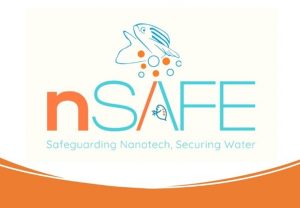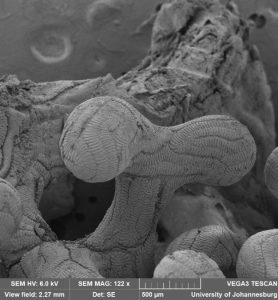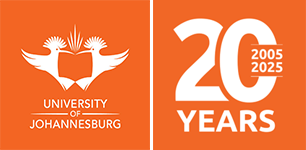Staff Members
Home »
Dr
Name: Tarryn Botha
Location: D3 Lab 228 Auckland Park Kingsway Campus
Zoology Academic Staff Staff Members
Contact Details:
Tel: +27 (0)11 559 2440
Email: tarrynb@uj.ac.za
About Tarryn Botha
Research:
Water: Access to clean water is a human right and it is our responsibility as aquatic scientists to ensure that it is brought to the people but more importantly it is safe for use. The use of nanotechnology in water purification is a developing field but could also in itself pose a risk. Multi species (bacteria, daphnia, nematode, potworm, earthworm and zebrafish) bioassays form part of the compilation of international dossiers that provide the standard for nanomaterial ecotoxicology.
An Adverse Outcome Pathway Approach is applied where endpoints assessed include toxicity (Lethal concentration, Effects concentration), reproduction, embryonic development, cardiology, respiration rates, biomarkers of effect, histopathology, swimming behavior, critical swimming speed and functional response. The pathways serve as a read across to human health.
Dr Botha’s research forms part of the South African Department of Science and Innovation (DSI) Nanotechnology Health Safety and Environmental NanoRisk Platform. This platform is part of the DSIs strategy of supporting systematic research in investigating the potential adverse effects of nanomaterials on the environment and determining mitigating techniques. Also, it aims to support the National Nanotechnology Strategy currently in implementation phase to ensure safe, responsible, and sustainable nanotechnology development and applications in South Africa.

Dr Botha’s research group is called nSAFE “Safeguarding Nanotech, Securing Water”.
Teaching
Physiology 3A and one honours course, Endocrinology.
Recent publications:
- TL Botha, E Bamuza-Pemu, A Roopnarain, Z Ncube, G De Nysschen, B Ndaba, N Mokgalaka, M Bello-Akinosho, R Adeleke, A Mushwana, M van der Laan, P Mphahlele, F Vilakazi, P Jaca, E Ubomba-Jaswa. 2023. Development of a GIS-based knowledge hub for contaminants of emerging concern in South African water resources using open-source software: Lessons learnt. Heliyon 9(1): e13007. https://doi.org/10.1016/j.heliyon.2023.e13007
- C van der Westhuizen, TL Botha, K Finger-Baier, G de Brouwer DW Wolmarans. 2023. Contingency learning in zebrafish exposed to apomorphine-and levetiracetam. Behavioural Pharmacology 34 (7), 424-436. https://doi.org/10.1097/FBP.0000000000000750
- S Bosch, TL Botha, V Wepener. 2023. Influence of different functionalized CdTe quantum dots on the accumulation of metals, developmental toxicity and respiration in different development stages of the zebrafish. Frontiers in Toxicology 5, 1176172.
- RD. Handy, NJ. Clark, J Vassallo, C Green, F Nasser, K Tatsi, TH Hutchinson, D Boyle, M Baccaro, N van den Brink and C Svendsen. 2022. The bioaccumulation testing strategy for nanomaterials: correlations with particle properties and a meta-analysis of in vitro fish alternatives to in vivo fish tests. Environ. Sci.: Nano, 2021,8, 3167-3185. https://doi.org/10.1039/D1EN00694K
- A Kataba, TL Botha, SMM. Nakayama, YB Yohannes, Y Ikenaka, V Wepener, M Ishizuka. (2022). Environmentally relevant lead (Pb) water concentration induce toxicity in zebrafish (Danio rerio) larvae. Comparative Biochemistry and Physiology Part C: Toxicology & Pharmacology. https://doi.org/10.1016/j.cbpc.2021.109215.
- J South, TL Botha, NJ Wolmarans, V Wepener, OLF Weyl. 2019. Assessing predator-prey interactions in a chemically altered aquatic environment: the effects of DDT on Xenopus laevis and Culex sp. larvae interactions and behaviour. Ecotoxicology. DOI : 10.1007/s10646-019-02075-5
- EE Elemike, DC Onwudiwe, OE Fayemi, and TL Botha. 2019. Green synthesis and electrochemistry of Ag, Au, and Ag–Au bimetallic nanoparticles using golden rod (Solidago canadensis) leaf extract. Applied Physics A, 125(1). doi:10.1007/s00339-018-2348-0
- S Bosch, TL Botha, A Jordaan, M Maboeta, and V Wepener. 2018. “Sublethal Effects of Ionic and Nanogold on the Nematode Caenorhabditis elegans,” Journal of Toxicology, vol. 2018, Article ID 6218193, 11 pages, 2018. https://doi.org/10.1155/2018/6218193.
- TL. Botha, K Boodhia and V Wepener. 2016. Adsorption, uptake and distribution of gold nanoparticles in Daphnia magna following long term exposure. Aquatic Toxicology 170:104-111. doi: 10.1016/j.aquatox.2015.11.022.
- TL Botha, TE James, and V Wepener. 2015. Comparative Aquatic Toxicity of Gold Nanoparticles and Ionic Gold Using a Species Sensitivity Distribution Approach. Journal of Nanomaterials. Article ID 986902.
- Vice President for Africa of the international Society of Environmental Toxicology and Chemistry (SETAC)
- African representative on the SETAC CheM panel which is part of the UN Environmental Program “Science-Policy Panel to contribute further to the sound management of chemicals and waste and to prevent pollution”
- Secretary of the Southern African Society for Aquatic Scientists (SASAqS)
- Exco member for South African Association for Laboratory Animal Science (SAALAS)
- OECD Working Party on Manufactured Nanomaterials- Steering Group on Testing and Assessment
- Professional Natural Scientist at the Society for Natural Scientific Professionals (SACNASP) in the Toxicological Sciences field of practice
Societal contributions:
Popular science and technical articles:
- Debbie Shaw. (2018). Largest zebrafish bioassay facility in Africa gains ground. Analytical Reporter. https://issuu.com/newmediab2b/docs/ar_issue4_2018
- Botha, TL and EMERGEINTERACT team (2019). The effect of microplastics and pharmaceuticals on trophic interactions. Noldus Information Technology blog post. https://www.noldus.com/blog/microplastics-pharmaceuticals
- Botha TL (2016- 2020). National Nanoecotoxicology website blog posts. https://www.nnbf.co.za/blog
- Botha and Roopnarain. (2021). The Establishment of a Knowledge Hub for Contaminants of Emerging Concern. Water Wheel. May/June.
Profiles: Google Scholar, Scopus, Loop, ResearchGate, ORCID
Images:

Scanning electron micrograph of a Sharptooth catfish air breathing organ

Synthetic tissue made using 3D printing and an exposure study using ex vivo tissue.
Videos:
Danio rerio (zebrafish) heart rate at 48 hours post fertilization
Danio rerio (zebrafish) blood flow at 48 hours post fertilization
Danio rerio (zebrafish) embryo activity at 24 hours post fertilization
